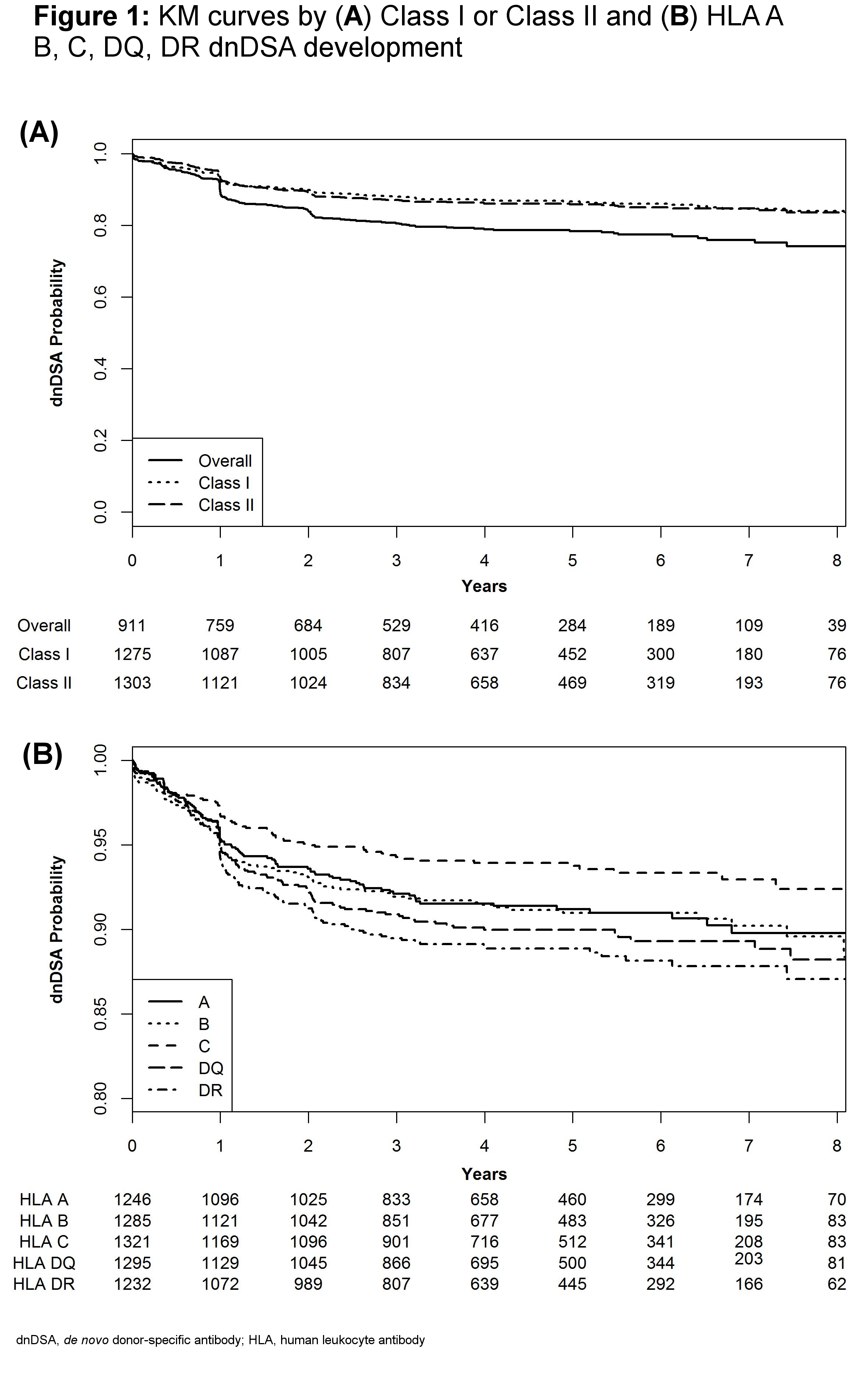Incidence of De Novo Donor-Specific Antibodies Following Kidney Transplantation.
1Northwestern University Transplant and Outcomes Research Collaborative (NUTORC), Chicago
2Astellas Pharma Global Development, Northbrook
3Now with UCB, Atlanta
4Dept of Preventive Medicine, Northwestern University, Chicago
Meeting: 2017 American Transplant Congress
Abstract number: 53
Keywords: Alloantibodies, HLA antibodies, Kidney, Kidney transplantation
Session Information
Session Name: Concurrent Session: Kidney HLA Antibodies
Session Type: Concurrent Session
Date: Sunday, April 30, 2017
Session Time: 2:30pm-4:00pm
 Presentation Time: 3:42pm-3:54pm
Presentation Time: 3:42pm-3:54pm
Location: E354b
With a range of frequencies reported in several small studies, true incidence of de novo donor-specific human leukocyte antigen (HLA) antibodies (dnDSA) is unknown. As such, we assessed incidence of dnDSA in the largest single-center kidney transplant (KT) retrospective cohort to date.
For all adult KT patients, demographic and laboratory data were collected from 2007–2015. DSA incidence was assessed per protocol at transplant (time 0), 3 and 6 months, 1 and 2 years post-transplant, and for cause. Continuous variables were summarized by mean and standard deviation (SD), and categorical variables by number and proportion. The Kaplan–Meier (KM) method was used to estimate time to event. Patients with pre-existing (baseline) DSA to a particular class or locus were excluded from analysis of that particular class or locus.
Overall, 1517 adult KT patients (mean (SD) age 49.5 (13.2), 63.1% male) were followed for ≤8 years (mean 4.4 years). For the patients who were DSA negative at baseline, at Year 1, approximately 11.2% of patients had developed dnDSA to any class or locus, and 11.2%, 19.6% and 22.0% developed Class I or II DSA at Years 1, 3, and 5, respectively. While some patients had multiple specificities, at Year 1, 7.6% had DSA to Class I, 7.1% to Class II, 4.7% to A, 5.1% to B, 3.3% to C, 5.1% to DQ, and 6.0% to DR. At Year 3, approximately 19.6% had developed dnDSA to any class or locus; 12.2% to Class I, 13.1% to Class II, 8.0% to A, 8.2% to B, 5.8% to C, 9.2% to DQ, and 10.6% to DR. At Year 5, approximately 22.0% of patients had developed dnDSA to any class or locus; 13.5% to Class I, 14.4% to Class II, 9.0% to A, 9.4% to B, 6.2% to C, 10.2% to DQ, and 11.4% to DR. KM survival curves can be seen in Figure 1. dnDSA steadily increased for all classes and loci through Year 8. HLA-II DR dnDSA were more frequent versus other loci, and HLA-I C dnDSA less frequent.
dnDSA steadily increased for all classes and loci through Year 8. HLA-II DR dnDSA were more frequent versus other loci, and HLA-I C dnDSA less frequent.
CITATION INFORMATION: Ho B, Bhagat H, Lee E, Atiemo K, Daud A, Kang R, Montag S, Zhao L, Schwartz J, Ladner D. Incidence of De Novo Donor-Specific Antibodies Following Kidney Transplantation. Am J Transplant. 2017;17 (suppl 3).
To cite this abstract in AMA style:
Ho B, Bhagat H, Lee E, Atiemo K, Daud A, Kang R, Montag S, Zhao L, Schwartz J, Ladner D. Incidence of De Novo Donor-Specific Antibodies Following Kidney Transplantation. [abstract]. Am J Transplant. 2017; 17 (suppl 3). https://atcmeetingabstracts.com/abstract/incidence-of-de-novo-donor-specific-antibodies-following-kidney-transplantation/. Accessed December 14, 2025.« Back to 2017 American Transplant Congress
